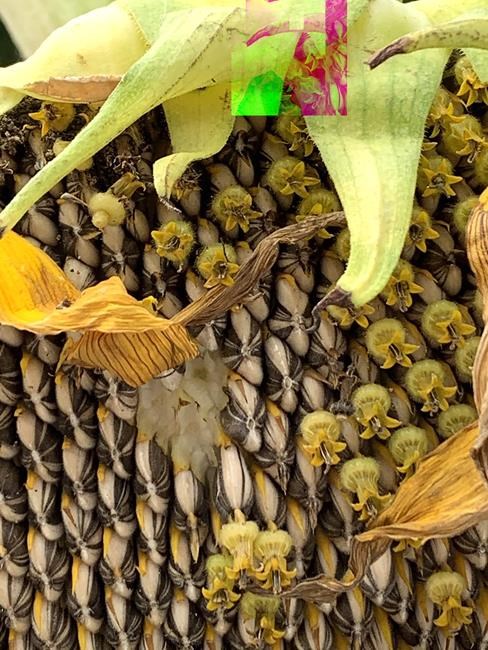Sunflowers: Popular, native and, for some, newly meaningful
Advertisement
Read this article for free:
or
Already have an account? Log in here »
To continue reading, please subscribe:
Monthly Digital Subscription
$0 for the first 4 weeks*
- Enjoy unlimited reading on winnipegfreepress.com
- Read the E-Edition, our digital replica newspaper
- Access News Break, our award-winning app
- Play interactive puzzles
*No charge for 4 weeks then price increases to the regular rate of $19.00 plus GST every four weeks. Offer available to new and qualified returning subscribers only. Cancel any time.
Monthly Digital Subscription
$4.75/week*
- Enjoy unlimited reading on winnipegfreepress.com
- Read the E-Edition, our digital replica newspaper
- Access News Break, our award-winning app
- Play interactive puzzles
*Billed as $19 plus GST every four weeks. Cancel any time.
To continue reading, please subscribe:
Add Free Press access to your Brandon Sun subscription for only an additional
$1 for the first 4 weeks*
*Your next subscription payment will increase by $1.00 and you will be charged $16.99 plus GST for four weeks. After four weeks, your payment will increase to $23.99 plus GST every four weeks.
Read unlimited articles for free today:
or
Already have an account? Log in here »
Hey there, time traveller!
This article was published 03/05/2022 (1282 days ago), so information in it may no longer be current.
The annual sunflower (Helianthus annus) has a long history in North America, with evidence of its cultivation for food, ceremonial and medical use by Native Americans dating back to at least 1,000 B.C.
Sunflower seeds are said to have been brought to Europe by Spanish explorers around the late 16th century, and eventually found their way to Eastern Europe. Ukraine is now the world’s leading producer of the plants.
Grown commercially mostly for snacks and oil, the pollinator-friendly plants — some of which can reach 10 feet tall — have enjoyed new popularity in recent years as farms and fields have opened to people seeking “sunflower selfies.” Photos of visitors standing shoulder-deep in flowers have become ubiquitous on Instagram and Facebook.

This year, sunflower images are all over social media for another reason too: as a symbol of support for embattled Ukraine.
It’s easy to grow your own sunflower field at home. Shorter varieties can even be grown in containers.
If starting from seeds, soak them in room-temperature water for 2-8 hours before sowing to improve germination. Plant directly into the garden, 1 inch deep and 6-12 inches apart, after the danger of frost has passed, or start indoors three weeks before your last frost date. Keep the soil consistently moist but not soggy until the seedlings sprout.
Whether started from seed or bought at a nursery, sunflower plants should be moved outdoors when the danger of frost has passed in your region.
Select a location that will provide a minimum of 6-8 hours of direct sunlight daily.
As the plants grow, they will develop long taproots that work their way deep into the ground. Before planting, loosen the soil, digging at least a foot down, and remove any rocks.
Mix a generous helping of compost into the bed or pot before planting. In addition to providing season-long, high-quality nutrients, compost will improve the drainage of heavy clay soil and increase the moisture retention of sand.
Water your plants when the soil dries, aiming to provide about an inch of water per week, adjusting for rainfall. A 2-inch layer of mulch will help retain soil moisture and reduce competition from weeds.
If you incorporated compost at planting time, your plants might not require additional fertilizer. But if you did not, apply a slow-release, granular, all-purpose fertilizer once or twice during the growing season, following package directions.
Taller varieties of sunflowers may require protection from wind, which could topple them, so it’s best to plant them against a fence or structure that will shield them. Otherwise, tie stems to sturdy stakes for support.
When the flowers open, cut them for bouquets in the morning, after the dew has dried, using a sharp knife or pruners.
To harvest seeds, wait until the plants die back and the flowers droop at the end of the season. The backs of the flowers will be brown, and you should be able to see seeds emerging from the head. Cut flowers off the plants with a few inches of stem attached, and immediately place them into a bag or container to avoid spilling the seeds, which will be loose.
Remove seeds by rubbing flower heads over a bucket using your hands or a stiff brush. Sift through the seeds to remove plant matter, and rinse well. Set them on paper towels overnight to dry.
Enjoy eating seeds raw (store them in a glass jar in the refrigerator) or place them on a cookie sheet and roast at 325 degrees Fahrenheit for 15-30 minutes or until brown, tossing halfway through. If you’d like your seeds salted, simmer them in 2 quarts of water to which you’ve added 1/3-1/2 cup of salt, for 1 1/2-2 hours, then strain through a colander and roast as above.
—-
Jessica Damiano writes regularly about gardening for The Associated Press. A master gardener and educator, she writes The Weekly Dirt newsletter and creates an annual wall calendar of daily gardening tips. Send her a note at jessica@jessicadamiano.com and find her at jessicadamiano.com and on Instagram @JesDamiano.

